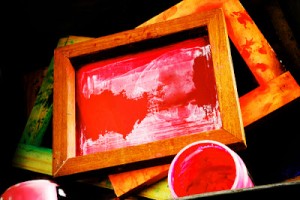Painting is not the only solution for decorating plastic signfaces. For high-volume jobs, screen printing with either solvent or UV curable inks is an economical solution. In selecting an ink system, ask your screen print supply distributor for a recommendation. The ink manufacturers’ technical bulletins will give you printing specifications. The type of mesh, squeegee, stencil and thinners are a few of the variables that will determine the amount of ink deposited on the sheet, which affect the appearance of the sign, when it is illuminated.

The ability to print on acrylic offers screen printers several lucrative opportunities, including P.O.P graphics and flat faced and thermoformed signage. Despite the allure to reach untapped markets, many printers have avoided printing acrylic, because of the difficulties in this type of printing.
These difficulties include variations in the acrylic substrate from one manufacturer to another, and selecting the right ink for the acrylic product used. Even though you formulate a particular ink to specifically work on acrylic, it may not work on every acrylic sheet.
Acrylic is inherently hard, which makes it difficult for the ink to bite into the surface. Variations from one batch of acrylic sheet to another can also result in adhesion problems. Adhesive residue from the masking film used to protect the acrylic sheet can also cause ink adhesion failures.
In selecting the best ink for the job, you should consider using a UV thermoforming ink. These inks adhere to a wider range of acrylic sheets than general purpose inks and provide the flexibility required for secondary operations, such as cutting, bending and thermoforming.
The tradeoffs when using UV thermoforming screen inks include their higher price per gallon and the higher energy output required to cure the ink. Thermoforming inks typically cure in two steps. The initial UV curing hardens surface of the ink. The ink fully cures in the second step, when it is subjected to the high heat of the thermoforming process, which can range between 300º-380ºF. Prior to thermoforming, these inks are very soft. For this reason, handle the acrylic sheets with tender loving care to prevent scratching.
In some cases, a general purpose ink may provide adequate results, when the job requires either bending or forming. The risk of adhesion failure, when using these inks, is much higher. For this reason, you should carefully monitor the performance of the ink during production. In selecting a screen printing ink, the printer must weigh the risk of failure against higher material cost.


